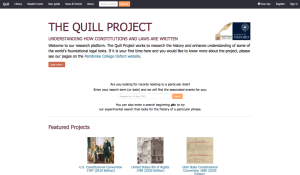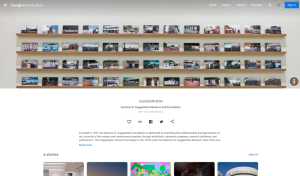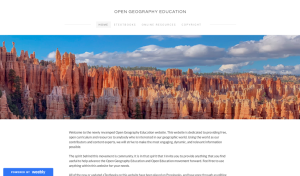General Interest
Back to Top
|
 |
|
The Quill Project
|
Social studies |
|
While traditional civics and political history education focuses on foundational documents like Constitutions, there is often a lack of attention to how such documents were produced. History teachers, legal scholars, and even legal practitioners will want to check out the Quill Project, a research platform from Pembroke College, University of Oxford and the Center for Constitutional Studies at Utah Valley University. The project seeks to "enhance understanding of some of the world's foundational legal texts," by revealing the "negotiation of law in formal settings." Using tailor-made software, the platform allows users to digitally manipulate historical documents to reconstruct the processes of negotiation, debate, and discussion which resulted in texts such as the U.S. Constitution and Bill of Rights. Readers may wish to begin by consulting the "User Guide," and once familiar with the software, can use the "Advanced Tools" to search and compare texts or create visualizations of statistics, timelines, activities, and documents related to specific legal texts. The Quill Project is directed by Nicholas Cole, political historian at the University of Oxford. [MJZ] |
|





|
|
 |
|
Ocean Twilight Zone
|
Science |
|
The ocean's "twilight zone," a region deep beneath the waves where weird and fascinating creatures thrive, is an important but little understood part of the vast marine ecosystem. Readers can "dive into" this world with the Ocean Twilight Zone (OTZ) project from the Woods Hole Oceanographic Institution (previously featured in the 06-07-2019 Scout Report). The link above opens a quiz page where users can click "Dive Deeper," then "Take The Quiz," to answer a series of questions that reveal which bizarre deep-sea creature they are. From the quiz page, readers can click the hamburger button in the upper right corner, then "About" and "Visit Our Website" to be taken to the full project page. On that page, readers looking to learn more about the scientific and public policy impact of the project, or the technologies involved in diving more than 3,000 feet below the ocean surface, can check out the Work & Impact drop-down menu or click "Logbook" for notes from the field and news about the ongoing project. Teachers might find useful resources to integrate into the classroom, such as the "Images" and "Videos" that can be accessed from the Multimedia drop-down menu. The "Creature Features" page linked under the Explore the OTZ drop-down menu provides detailed information about some of the twilight zone creatures, such as the strawberry squid, lanternfish, atolla jellyfish, and black swallower. Click one of the featured creature tiles for photos, a description, quick facts, and related research items. OTZ is funded in part by the Audacious Project. [MJZ] |
|





|
|
 |
|
Google Arts & Culture: Solomon R. Guggenheim Museum and Foundation
|
Arts |
|
Even as many museums around the world reopen with adaptations for the COVID-19 pandemic, not everyone is able or willing to visit in person. That makes this overview of New York's Solomon R. Guggenheim Museum, provided by Google Arts & Culture (previously featured in the 07-19-2019 Scout Report), extra handy for armchair travelers. Visitors can view more than 200 artworks inside the museum by selecting from a handful of online exhibits, such as But a Storm Is Blowing From Paradise: Contemporary Art of the Middle East and North Africa, or Storylines: Contemporary Art at the Guggenheim, featuring works from the late 20th and early 21st centuries. The exhibit Architecture of the Solomon R. Guggenheim Museum provides a deep dive into architect Frank Lloyd Wright's iconic design of the building. In addition to the exhibits, readers can find artworks organized by material and artist under In This Collection. For visitors who wonder how the museum manages to hang art on its round walls, scroll to the section titled 4 Museum Views and click the small human figure icon to walk the spiral. The page linked above also provides basic information about the museum, including opening hours, website, and location. [DS] |
|





|
|
 |
|
Open Geography Education
|
Social studies |
|
Instructors and professors of geography and related disciplines will want to take advantage of the resources made available by Open Geography Education, a website "dedicated to providing free, open curriculum and resources to anybody who is interested in our geographic world." Part of the movement towards Open Education Resources (OER), the site makes peer-reviewed, Creative Commons-licensed geography educational materials available for open access. Visitors can click on "eTextbooks" for links to OER geography and geology textbooks, geography lab manuals, and geospatial technology instructional materials. The books are designed to be readable on smartphones and tablets and for use in face-to-face, hybrid, or entirely online courses. There is also an "Online Resources" page with helpful links to professional organizations, government agencies, private sector institutions, and research centers and projects touching on physical, environmental, and human geography, geographic information systems, remote sensing, and spatial data analysis. Open Geography Education was created by R. Adam Dastrup, Geosciences Coordinator at Salt Lake Community College (SLCC), with support from SLCC, GeoTech, Lumen, Esri, and the Utah State Board of Education. [MJZ] |
|





|
|
 |
|
Because We've Read
|
Language Arts |
|
From writer, community organizer, and educator Hoda Katebi, Because We've Read is an international book club and digital library focused on raising awareness and understanding of issues in global politics, race, gender, colonialism, religion, and more. Activists, humanitarians, and philologists, as well as those seeking to broaden their worldview, will enjoy this collection, which uplifts and celebrates stories from marginalized peoples. Every two months, Because We've Read announces a new featured book and accompanying multimedia resources as a mini-syllabus on an important topic. Each featured book is available for free digital access (in addition to a digital library of books from previous units and recommended readings). Throughout each unit, participants are encouraged to post their thoughts, questions, and reflections to discussion boards and social media and to participate in a YouTube Live session hosted by Katebi and a guest. As an example, a year-long series during 2021 focuses on Black experiences in trans-national contexts. Readers can join in the ongoing discussion by clicking "Currently Reading" in the hamburger menu, or click "Local Discussion Groups" to find local book club chapters that organize discussions, events, and more. Visitors can keep up to date on Twitter and Instagram (@becauseweveread on both platforms). [RMP] |
|





|
|

















